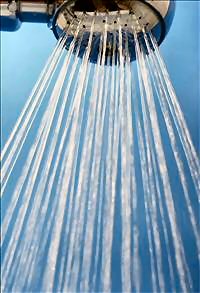Water Hardness
 Hardness is a measure of the presence of the minerals calcium and magnesium in water.
Hardness is a measure of the presence of the minerals calcium and magnesium in water.
As water moves through or over the earth, it picks up these minerals and causes the water to become “hard.” The usage of the word “hard” in this case refers to the difficulty with which the water produces soapsuds, with successively harder water requiring more and more soap.
Columbus softens its water on average to 120 parts per million (ppm), or approximately 7 grains per gallon. This is considered moderately hard by national standards and is optimal for corrosion control. Very soft water can be corrosive to home plumbing.
To check the hardness of Columbus' water, view the " Water for Living Consumer Confidence Report." It shows the types and amounts of key elements in your drinking water, their likely sources and the maximum contaminant level (MCL) that is considered safe. The water delivered to your home meets ALL of the requirements of the Safe Drinking Water Act (SDWA).